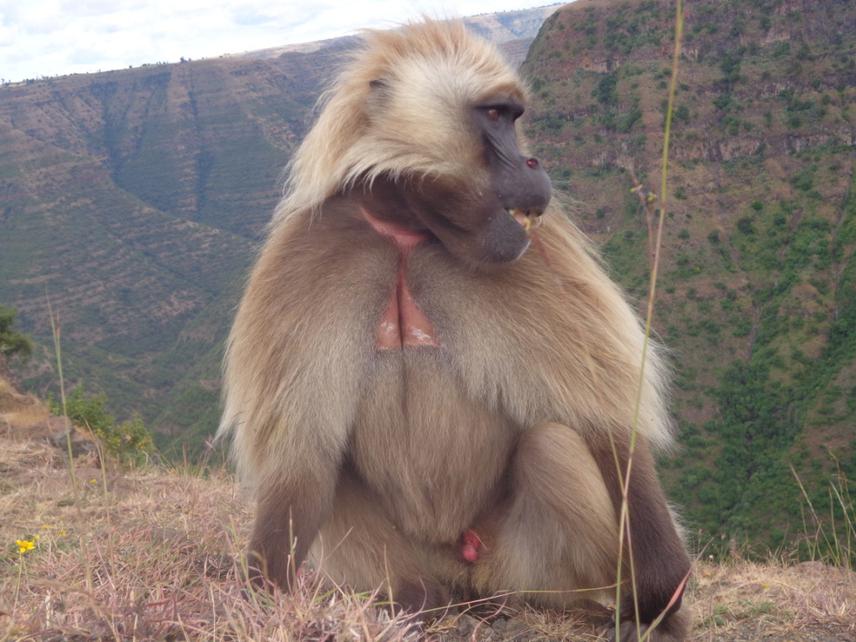Amera Moges
The aims of the project are to assess the current distribution pattern, habitat use, population size, feeding ecology, activity budget, ranging patterns and human-gelada conflict of the little-known Arsi geladas at eastern Arsi, and to designing conservation and management strategies.

A group leader, Arsi Gelada. Photo by Amera.
Arsi gelada (Theropithecus gelada unnamed subspecies) is regarded as the third subspecies of the gelada monkey (Theropithecus gelada), which is the only extant species of genus Theropithecus and endemic to Ethiopia. Unlike the other two well-known subspecies of geladas (T. g. gelada and T. g. obscures), the Arsi gelada (Theropithecus gelada unnamed subspecies) is a little-known, isolated and rare subspecies of geladas endemic to eastern Arsi, east of the Great Ethiopian Rift Valley, Ethiopia. The Arsi geladas are believed to consist of only few small and isolated populations in Arsi at lower elevation with drier habitat, this subspecies should almost certainly be classified as Endangered. However, data on its ecology and population status are not fully documented. Thus, the current study aims to provide baseline scientific data on the current distribution, habitat use, population size, feeding ecology, activity budget, ranging patterns and human-gelada conflict of a little- known Arsi geladas at eastern Arsi.
With the current increasing habitat loss and degradation across Arsi gelada’s geographic range, data on the conservation status and population size, ecology and human-gelada conflict are imperative to design conservation and management strategies for this enigmatic subspecies and its preferred habitat and to help designate its proper IUCN Red List status. The results of this study will be submitted to the decision makers for the Regional and National Wildlife Authorities to help implement conservation and management strategies recommended as well as other stakeholders. Furthermore, the results of this study will be fundamental to increase the awareness of the local community and in turn to help conserve the geladas and their habitats.